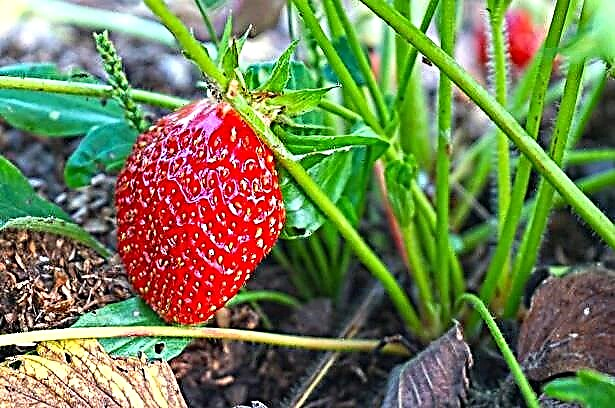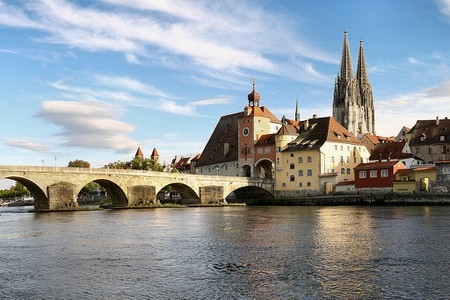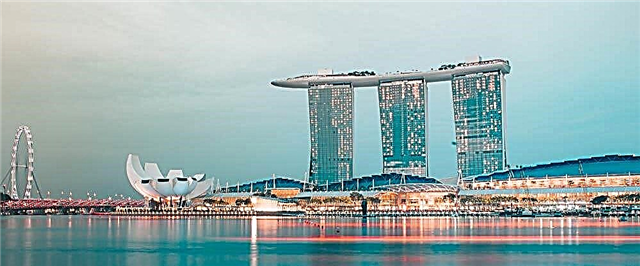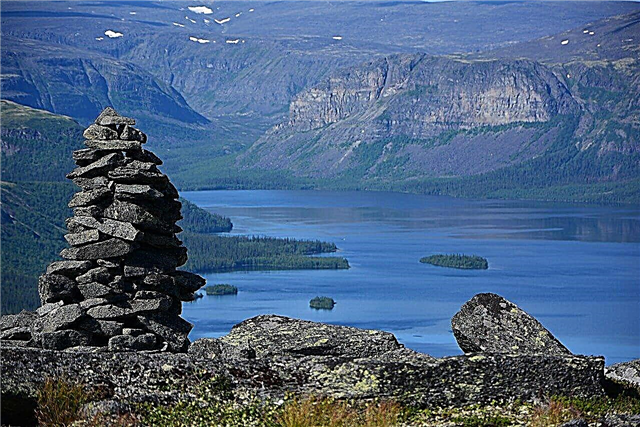The Murmansk region is a harsh northern region with rich natural diversity and amazing rare places. About 70% of the region is occupied by the Kola Peninsula, washed by the Barents and White Seas. The region is located in the zones of northern taiga, forest-tundra and southern tundra, the relief is represented by mountain ranges and swamps, dense taiga forests, fast rapids rivers and clean lakes.
There are 72 nature conservation areas in the region, including three reserves of federal significance, Kandalaksha, Laplandsky and Pasvik, as well as 12 reserves and 54 natural monuments. The local forests are 600 years old and are home to many rare flora and fauna. The Khibiny and Lovozersky mountain ranges are unique. The protection of the sea coast, where numerous bird colonies gather, is extremely important.
The most beautiful natural attractions
List, photo with names and descriptions of federal protected areas.
Kandalaksha reserve
The natural zone is located on the territory of the Murmansk region and Karelia, covers the coast and waters of the Barents and White seas, Kandalaksha Bay, as well as islands. The area of the reserve is more than 70 530 hectares, including the tundra and taiga zones. Has international environmental significance. The main task is to preserve the population of the northern eider duck, as well as other animal species. There are 229 species of animals and plants listed in the Red Data Book under protection. For tourists there is an excursion route 3 km long.

Lapland nature reserve
One of the oldest nature reserves in Russia and the largest in Europe. It covers the shores of Lake Imandra, the Monchetundra and Chunatundra mountain ranges. It was founded in 1930 with the aim of preserving the reindeer and its natural habitat. The main wealth is untouched forests, the age of trees reaches 400 - 600 years. Various routes are available for visiting, including a visit to the fabulous Lapland, to visit Santa Claus.

Reserve "Pasvik"
The international reserve is located in the Pechenga region of the Murmansk region and Norway. Created to protect the northernmost pine forests in Europe, as well as the Pasvik valley wetlands and their inhabitants. Outcrops of ancient rocks, archaeological finds from the Stone Age are important for the study. The reserve is actively involved in educational activities: expeditions, seminars, eco camps.

National Park "Khibiny"
The natural park was created in 2018, in the western part of the Kola Peninsula. Includes Lovozersky and Khibiny mountain ranges. Geological and archaeological objects are protected and studied, almost all biological diversity of the Murmansk region is represented on unique landscapes. The park is managed by the Lapland Nature Reserve and is one of the most visited eco-routes in the region.

Natural monument "Lake Mogilnoe"
The reservoir is located on Kildin Island in the Barents Sea, separated from it by a narrow strip of land. The lake is 560 meters long and 280 meters wide. The estimated age is 1000 years. It is one of the few reservoirs with layers of water of varying degrees of salinity that do not mix with each other. Due to this, both marine inhabitants and freshwater ones, including the Red Book Kildin cod, are found here at the same time.

Natural monument "Astrophyllites of Mount Eveslogchorr"
Mount Eveslogchorr is located in the southeastern part of the Khibiny mountain range. Unique deposits of minerals have been found on its western slope. 120 minerals have already been identified, including 27 rare ones: spinel, topaz, corundum-sapphire. Minerals such as perliolite and denisovite have been found for the first time. It is possible that science has yet to discover new, previously unknown species here.

Reserve "Tulomsky"
The reserve got its name from the Tuloma river, next to which it is located. The territory is 337 km2 in the northwestern part of the Kola Peninsula. The main part of the reserve is covered with forests of the northern taiga, where bear, wolverine, mink, muskrat, ermine, marten, elk live here. The main task of the natural zone is to study and maintain the population of animals, as well as preserve the natural conditions of their habitat.

Reserve "Murmansk Tundra"
The reserve is located in the Lovozersky District of the Murmansk Region, in the basin of the Iokan River and Lake Enozero. It has a difficult relief: fast rivers in rocky shores, glacial lakes, swamps, the Balkon-Mylk massif, moraine ridges and hillocks. Vegetation belongs to the tundra and forest-tundra zones. There are many animals, the Red Book birds, the white-tailed eagle, the gyrfalcon, the peregrine falcon. Salmon and brown trout are found in reservoirs.

Voryema River Valley Wildlife Refuge (prospective)
In the Pechenegsky district of the Murmansk region, it is planned to open a new nature protection zone in the near future. An area of about 30 thousand hectares is located in the extreme north-west of the region, near the Norwegian border. The Voriema River flows in rocky shores, rapids are often found, and flows into the Barents Sea. Its valley is home to a wide variety of plants and animals.

Polar-Alpine Botanical Garden-Institute named after N.A. Avrorin
The botanical garden is the northernmost one in our country. Its main part is located in the city of Kirovsk, on the mountain slopes of the Khibiny. There is a second less extensive site in the vicinity of Apatit. First of all, this is a research institute that studies the ecosystems of the region and the Svalbard archipelago. Visiting the botanical garden, you can see hundreds of exotic plants in the greenhouse, thousands of species in nurseries, and be sure to hug a century-old birch tree for good luck - the same age as the garden.

Natural parks of the Murmansk region
The most interesting and beautiful natural parks worth visiting.
Rybachiy and Sredny Peninsula Natural Park
The route is popular with Russian and European tourists. In addition to beautiful views and unique natural objects, ancient cave paintings, a stone with autographs of sailors of the 16th-19th centuries, as well as memorable places of the Great Patriotic War have been preserved here. Rocks and stones here are 700-800 million years old, and the bird colonies are the largest in the region.

Natural park "Korablekk"
The park is located in the Pechenga district of the Murmansk region, geographically divided into two sections. The western part is the Kaskama Upland, and in the east directly Korablekk. Forest areas here alternate with mountain tundra. It is interesting to see live trees with a trunk twisted along its axis and dwarf birches no more than 15 cm in height. The clean lake Niljärvi, surrounded by a 350-year-old pine forest, is considered a water gem.

Natural Park "Tersky Bereg" (perspective)
At present, work is underway to create a new natural park by transforming the Varzugsky nature reserve. The territory covers the valley of the Varzuga River, as well as its tributaries and nearby lakes. Salmon is found here, assigning a new status will help preserve the ecosystem and fish population. The river is popular among fans of water rafting, it is planned to change the tourist regime and places of visit, to close the spawning grounds.

Natural Park "Kutsa" (perspective)
Now Kutsa is a nature reserve, but in the future it is planned to increase the environmental status. The territory includes the basins of the Kutsa and Tumchi rivers in the south-west of the region and borders with Finland. Old-growth forests, lakes and swamps are under protection, as habitats of 20 species of the Red Data Book animals. Valuable fish species are found in the dense river and lake systems. Quartz, amethyst and rubies were found in the depths of the reserve.

Natural monuments of the Murmansk region
The most interesting natural monuments worth seeing.
Bird colonies in Dvorovaya Bay
The natural monument is located in the Lovozero region on the shores of the Barents Sea and has a state status. It includes the Dvorovoy Cape, the bay of the same name and 4.5 km of the sea coast. An unusually wide accumulation of birds for these places gathers here: kittiwakes, slender-billed guillemots and crested cormorants, listed in the Red Book. Tourists come for fishing, for mushrooms and berries, and also admire the rocks dotted with birds.

Waterfall on the Shuoniyok River
The picturesque place is located on the river of the same name in the Pechenga region, near the village of Nikel. In the main course, the river is calm, clean and very transparent. But falling off a rocky cliff, it turns into a powerful noisy stream. The height of the waterfall is 8 meters. Many hiking trails pass through these places. High rocky shores, trees growing right on the stone are extraordinarily beautiful. Especially lucky fishermen catch river trout here.

Lake Komsozero
The lake is located in the west of the Kola Peninsula, in the Kovdor region. It was formed by flooding a depression between the hills with underground springs. The water here is unusually clear, the bottom is visible even at great depths. It has an elongated shape: 1.2 km long and up to 600 meters wide. The lake itself and 500 meters of the coastal zone around it are under protection. A lady's slipper is found on the shores, and rare species of salmonids are found in the lake.

"Yuksporrlak"
The natural monument is named after the mountain pass. The place is located in the central part of the Khibiny, 8 km from the city of Kirovsk. Here, between the headwaters of two mountain streams, in a picturesque gorge, a unique species diversity of plants is presented. Most of the land is covered with tundra vegetation: rare mosses and lichens, vascular plants. A road passes through the gorge, and beautiful views open up from the pass.

Rock carvings near the village of Chalmny-Varre
The name of the former village is translated from the Sami language as “the eyes of the forest”. It is located in the middle reaches of the Ponoy River in the Lovozersky District. Six boulders with carvings of ancient Sami who lived here 4000 years ago were found near the river bank. One of the stones was taken to a museum in the village of Lovoozero. Drawings tell about hunting for deer, shaman's rituals. In addition, Sami burials were found in the tract.

Lamb's forehead near Lake Semyonovskoye
The natural monument is located on the outskirts of the Leninsky district of Murmansk, 400 meters west of Lake Semenovskoye, not far from the famous monument "Alyosha". A large granite stone was smoothed by the movement of the glacier during the Valdai glaciation. Having cut away large irregularities, the glacier still left deep grooves on the stone. These kind of rocks are often found in the region.

Cape Amethyst Ship
A low stone cape is located on the coast of the White Sea, in the Tersk region, near the village of Kashkarantsy. The promontory has a brownish-red hue due to sandstone rocks. Amethysts have been mined there since the 16th century by the Pomors and monks of the Solovetsky Monastery. The stones had no analogues in the world in terms of purity and color. At present, the deposit is fully developed and is protected as a natural monument.

"Granitoids of Mickey Island"
The island is located in the Kandalaksha Bay, 7 km from the village of Lesozavodskoye. The island is uninhabited, covered with dense forest, divided by bays into two parts. It is surrounded by other islets, some of which are connected by a sandbank. The outcrop of rocks is 200 by 500 meters in size, its age is estimated at 2.3 billion years. The place has great scientific value and is recognized as a natural monument.

"Therapeutic mud of Palkin's lip"
Palkina Guba is located in the Kandalaksha Bay of the White Sea, here, a 20-minute drive from Kandalaksha, there are deposits of healing mud. The territory of the natural monument is 400 hectares, includes the sea coast and the low tide zone, littoral. Mud is supplied to medical institutions of the region, for the treatment of the spine, gastrointestinal tract, skin, joints. A dirt road from the White Sea village leads to the place.

Crow's Lip (promising)
Guba is located in the Kandalaksha Bay, here the river of the same name flows into the sea. There are very beautiful landscapes along the entire coast: sandy beaches, high sheer cliffs. The coast is surrounded by dense, practically untouched spruce forests. It is planned to create a natural monument here in order to protect commercial fish species, as well as rare vegetation and birds. The gray crane, white-tailed eagle, and shrike live.

"Kandalaksha Coast" (promising)
The territory covers the northern part of the coast of the Kandalaksha Bay, from its top to the mouth of the Varzuga River. There are several bays along the coast, settlements: Kandalaksha, Kolvitsa, Umba. The coastal area is covered with dense spruce forest. Fishing is carried out in the sea. There are rare plant species, many of which are disappearing. To preserve the flora of the region, it is planned to introduce an environmental regime.

Teriberka Rocks (prospective)
In the Kola district of the Murmansk region, on the shores of the Barents Sea, there is the ancient village of Teriberka. To the east of it, the sea coast is cut by high cliffs. The place has always attracted hikers and natural beauty enthusiasts. The rocks facing the rivers Teriberka and Muchka are distinguished by rich vegetation: rare species of mosses, Rhodiola rosea. In the future, it is planned to create a natural monument here.

See also: Top 20 - the main attractions of Teriberka
Natural reserves of the Murmansk region
The most interesting regional sanctuaries worth visiting.
Reserve "Kolvitsky"
The reserve is located in the south-west of the Kola Peninsula, on the territory of the Tersky and Apatitsky districts. The territory is enclosed between the Kolvitskoye and Nizhnee Kontozero lakes, the Bolshoy river and the Bolshoye Saigozero lake. Untouched centuries-old spruce and pine forests are home to many animals, including lynx, wolverine, reindeer, swan, peregrine falcon. Organized tourism, berry and mushroom picking is allowed.

Reserve "Kaita"
The land belongs to two districts of the region: Kovdorsky and Kandalaksha. The reserve is divided into three clusters: "Kaita", "Suroyva" and "Vodyanaya". On the territory there are rivers and lakes, spruce and pine forests 200 - 300 years old, rocks, mountain tundra areas and wetlands. Hundreds of plant and animal species listed in the Red Book of Russia and the Murmansk region are under protection.

Reserve "Seydyavvr"
The territory is located in the center of the Kola Peninsula, between Lovozero and Umbozero, 2 km from the village of Revda. The reserve includes Seydozero and rivers flowing into it and streams flowing through deep canyons. The lake is considered sacred; an ancient drawing has been preserved on one of the adjacent rocks. In addition to the protection of flora and fauna, work is underway here to preserve the traditional environment for the local indigenous peoples - the Sami.

Reserve "Varzugsky"
The reserve is located in the Tersk region and includes the basins of the Varzuga and Kitsa rivers. Its main goal is to preserve the habitats of salmon and European pearl mussel. In addition, there are rare plant species on the territory, lynx, wolverine, weasel live. Tourism is prohibited here, but the Varzuga River is very popular with rafting enthusiasts, and therefore nature suffers from illegal activities.












